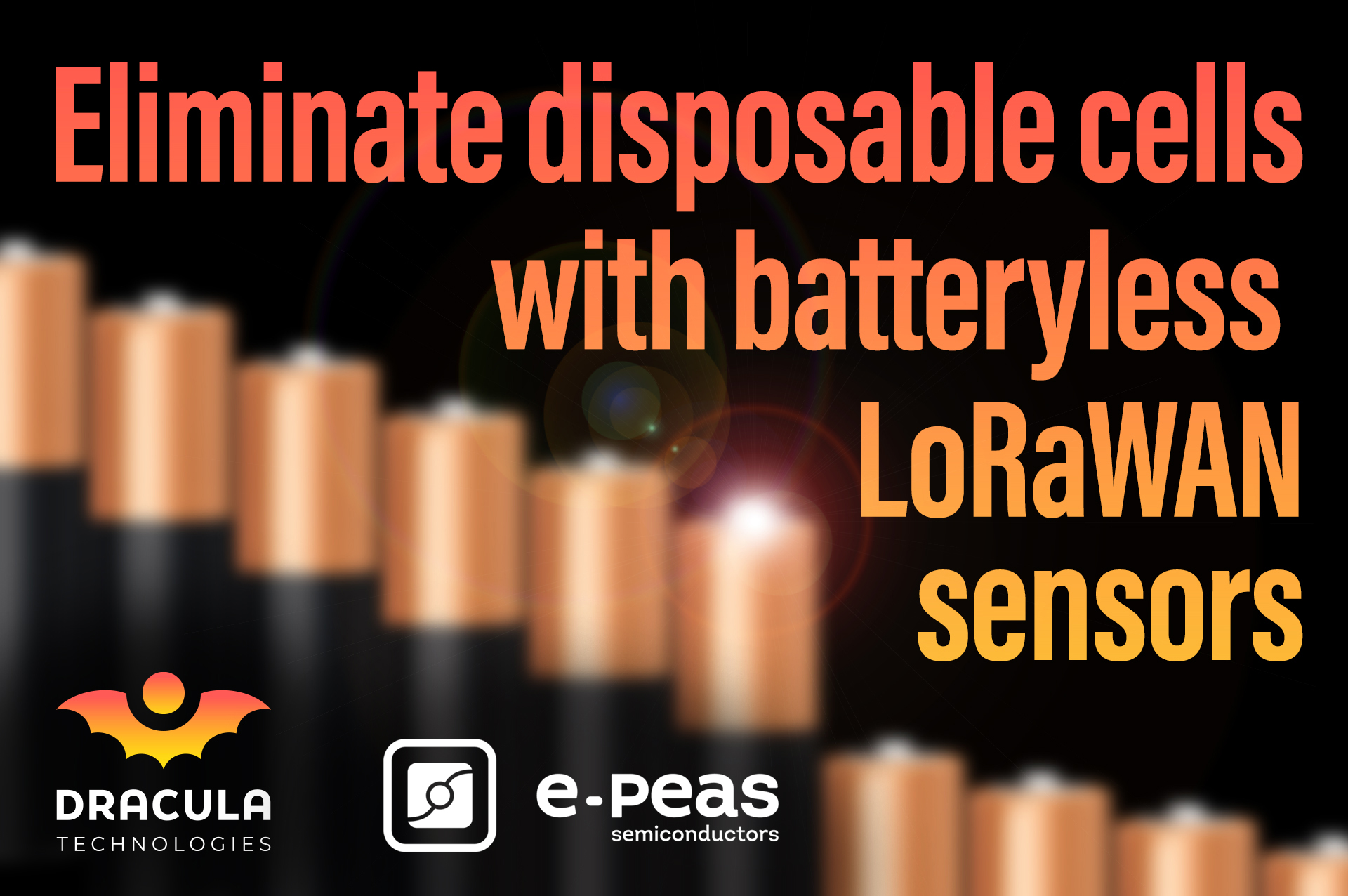The combination of Dracula OPVs and e-peas PMICs offers a revolutionary solution for powering LoRaWAN sensors without the need for batteries. These technologies provide a sustainable, long-term power source for IoT devices by harvesting ambient light and efficiently managing energy. This solution is especially suited for remote or hard-to-reach areas where traditional power solutions are costly or impractical.
Traditional Power Challenges
Typically, LoRaWAN devices rely on batteries or wired connections to stay powered. However, both approaches come with significant limitations. Wired connections are expensive to install and maintain, particularly in remote locations. Batteries, on the other hand, have limited lifespans, usually lasting only one or two years before they require replacement. Frequent battery replacements not only drive up operational costs but also create environmental waste, posing a challenge for businesses looking to scale IoT deployments.
Dracula OPVs and e-peas PMICs: The Sustainable Alternative
The integration of Dracula OPVs and e-peas PMICs provides an efficient and sustainable alternative to traditional power sources. Dracula OPVs are organic photovoltaic cells that efficiently capture ambient light, even in low-light environments like indoor industrial facilities. These cells generate enough energy to power LoRaWAN sensors continuously. Meanwhile, e-peas PMICs (Power Management Integrated Circuits) are responsible for managing the harvested energy, ensuring it is used efficiently and stored when light conditions fluctuate. This energy management ensures the devices remain powered even in periods of low light.
Ready for Customisation and Deployment
The combination of Dracula OPVs and e-peas PMICs is available as an off-the-shelf evaluation kit, allowing developers to customise the solution according to specific project needs. By testing and optimising these technologies, businesses can reduce costs related to battery replacements and complex wiring. Additionally, the scalability of this system makes it an ideal choice for widespread IoT deployments.
In conclusion, Dracula OPVs and e-peas PMICs offer a batteryless, eco-friendly power solution for LoRaWAN sensor nodes. This combination reduces both operational costs and environmental impact, making IoT solutions more efficient and sustainable.
You must be signed in to post a comment.

Comments
No comments yet